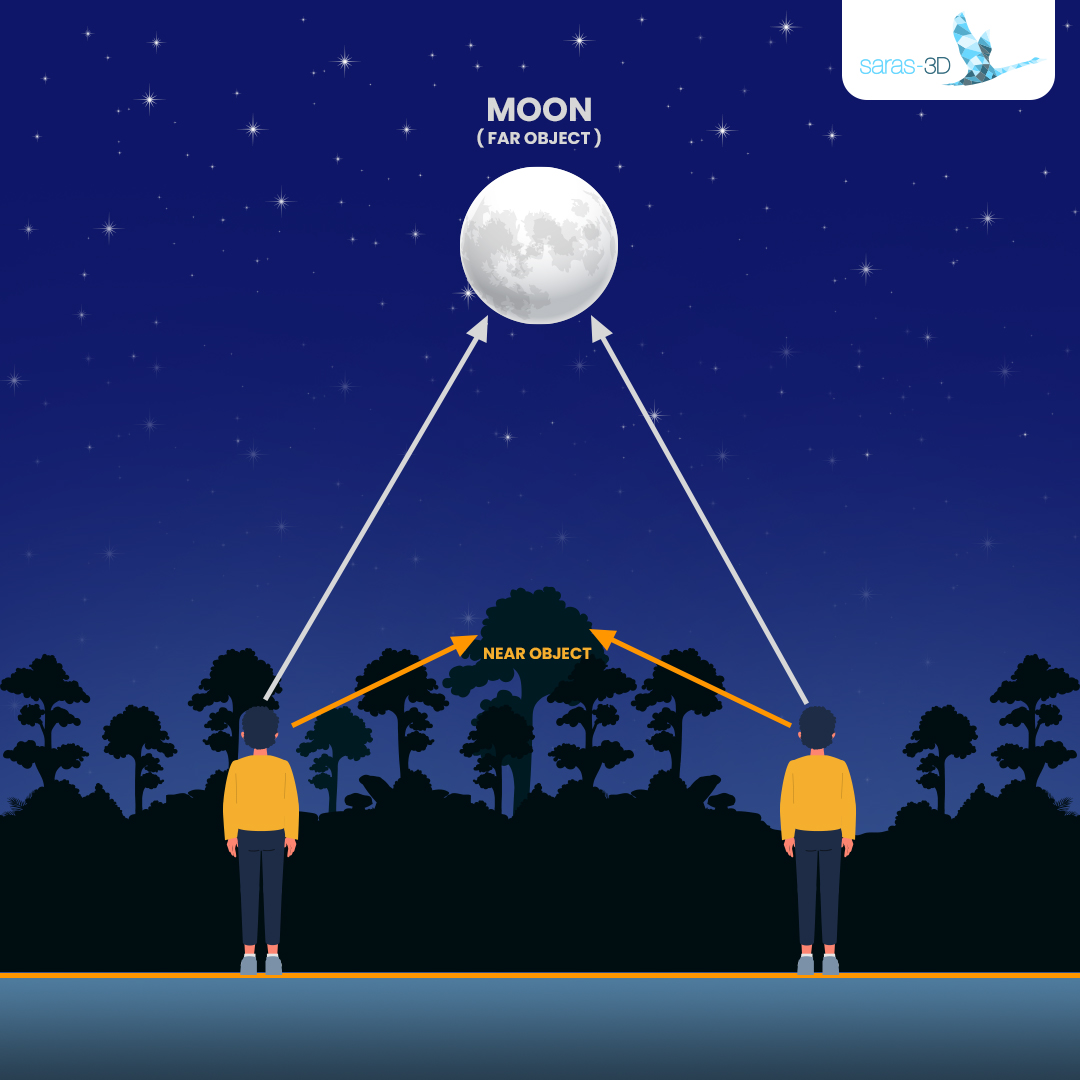BLOGS
At Saras, our mission is to ensure that all the students are given an opportunity to reach their full potential. We are passionate about creating and encouraging tomorrow’s innovators and problem solvers and make high quality education available to all.

Parallax Effect - Relation With The Moon and 3D Imaging
You might have felt like the moon is following you whenever you travel. But when you see the objects in the landscape nearby, they pass on quickly! Why does this happen? The answer is quite simple - the moon is at a greater distance than the objects you see nearby on earth.
For instance, when you ride a bike and notice the surroundings, you feel like the trees, buildings, and signboards are passing by. Furthermore, they disappear once you travel past that location.
How does this occur?
It is due to the parallax angle - an apparent shift caused by seeing an object from two positions. If you are approaching a building, first you see it in front, then to the side, and then behind you. That is how your visual system works by signaling to your brain that you are moving by the building.
But the moon is far away. When you view it from a moving vehicle, you do not have the general indications in the surroundings to signal your visual system. It is because you do not see the changing angle of the moon the way you see it while passing through the building, as mentioned in the above example.
If we consider the parallax angle you make with the moon from two different positions while traveling, it will be negligible compared to the angle you make with the nearby objects. Moreover, when you are on a bike, your brain immediately compares the distant moon to the nearby objects moving past. That is why when you are moving on the vehicle, the moon seems to remain in the same place, making you feel it is following you!
How Can We Use Parallax In 3D Imaging?
We can use Parallax to reproduce and display 3D images. It involves capturing 2D images of the object from two subtly different angles and exhibiting them such that we can view only one of the two images through each eye.
Let us take an example of a stereoscope, a well-known device used in the 19th century. It uses Parallax to display photographs in 3D. Two images placed side by side are viewed through a group of lenses. Two photos are taken from different angles (as mentioned above). The left eye would see what the left photo represents, and the right eye would see the right one. The two 2D images merge into a single 3D image when viewed through a specific device.
Some movie makers use polarized light to achieve a 3D effect. The two orthogonally or right-angled polarized images (usually in an ‘X’ form) are projected together on the screen. Thus, the special 3D glasses allow only one of the two overlaid images into each eye.
Many of today’s 3D televisions use an active-shutter scheme to display images that alternate at 240 Hz for each eye. Special glasses are synchronized with the TV to alternatively block the left and right images for each eye.
3D imaging is also used in many areas of science and medicine. For example, CT scans (real 3D images of regions within the body) can be displayed so that each eye views the picture from a slightly different angle to create a parallax effect. Then we can rotate and tilt the picture while viewing it. Scientists may also use 3D images to conceptualize molecules, viruses, and objects that cannot be directly viewed through optical microscopes.
Wrapping Up
The Saras-3D team came up with the idea of using Stereoscopy to create a 3D learning solution for STEM students. When real-life-like simulations are viewed through special eyeglasses, they create a three-dimensional and interactive learning experience. This method enables students to understand topics profoundly and learn twice as fast through hands-on interaction with realistic, scaled models. Learning by doing is the key to today’s education, which leads to better recall and higher scope of career advancement.
BACK